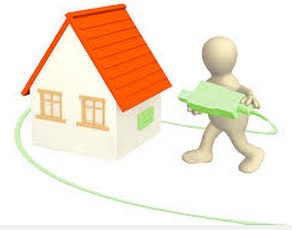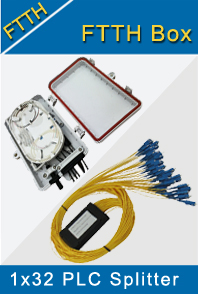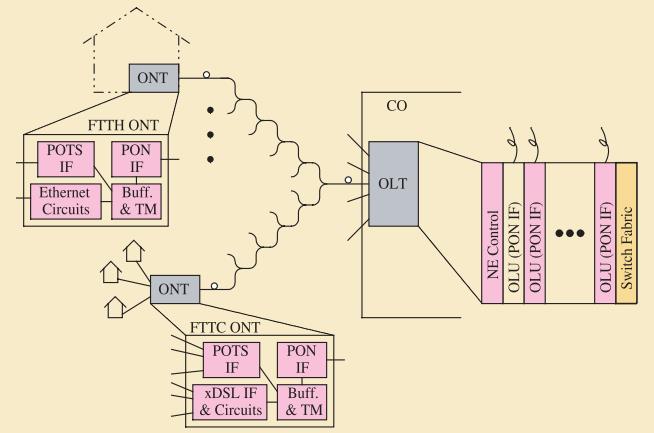-

- Sopto Home
-

- Special Topic
-

- FTTH Knowledge
-

- A brief history of Fiber in the Loop
FTTH Knowledge
- Solving the FTTH Rollout Problem in Multiple Dwelling Units
- WDM PON Introduction FAQ
- A Simple Overview of Optical Power Meter
- ODN is based on PON FTTH Optical Cable Network of the Device
- Using an OTDR to be an Expert in Fiber Link Testing
- How FTTH Broadband Works?
- Connections among Fiber Terminal Boxes & Patch Cables & Pigtails
- Easy to Install a Fiber Terminal Box
- What is Arrayed Waveguide Grating?
SOPTO Special Topic
Certificate



Guarantee
Except products belongs to Bargain Shop section, all products are warranted by SOPTO only to purchasers for resale or for use in business or original equipment manufacturer, against defects in workmanship or materials under normal use (consumables, normal tear and wear excluded) for one year after date of purchase from SOPTO, unless otherwise stated...
Return Policies
Defective products will be accepted for exchange, at our discretion, within 14 days from receipt. Buyer might be requested to return the defective products to SOPTO for verification or authorized service location, as SOPTO designated, shipping costs prepaid. .....
Applications

Sopto supply the best FTTH solutions for your network!
SOPTO Products
- Fiber Optic Transceiver Module
- High Speed Cable
- Fiber Optical Cable
- Fiber Optical Patch Cords
- Splitter CWDM DWDM
- PON Solution
- FTTH Box ODF Closure
- PCI-E Network Card
- Network Cables
- Fiber Optical Adapter
- Fiber Optical Attenuator
- Fiber Media Converter
- PDH Multiplexers
- Protocol Converter
- Digital Video Multiplexer
- Fiber Optical Tools
- Compatible
Related Products
Performance Feature
FTTH Knowledge
Recommended

A brief history of Fiber in the Loop
The first serious interest in fiber to the home (FTTH) began in the late 1980s as the telephone companies gained experience with ISDN wideband services to subscribers. Rapid advances in the technology of optical transmitters, receivers, and fibers made FTTH appear to be potentially just over the horizon.
The first generation of FTTH systems attempted to directly replace the copper loop with a fiber. An optical network terminal (ONT) was installed at (or near) the subscriber’s premises.
The network side of the fiber was terminated on a line card in an optical line terminal (OLT) or a traditional digital loop carrier (DLC).
This topology is known as an active star, or an active double star if a set of optic transceivers is used in a DLC remote terminal (RT) in order to reach the ONTs. Most of the large equipment manufacturers built prototype or field trial versions of this type of system. Typical bandwidth over the fiber to the subscriber on these systems was a DS1 or E1 signal.
Passive optical networks (PONs) were explored as a way to reduce the number of optical transceivers and fibers.
As illustrated in Figure 1, a PON system uses a single optical transceiver at the OLT to serve multiple subscribers over a fiber tree or bus constructed with passive optical signal splitters.
The first FTTH trial PON system was developed and deployed by British Telecom around 1989.
First generation PON systems were developed by both major equipment vendors and start-up companies.
The first deployments of commercial PON systems targeted business customers. The market was relatively small, however, since it was uncommon to have a cluster of business customers wanting access to bandwidth greater than DS1/E1 that were all reachable by the same PON.

Figure 1. PON Example
Surprisingly, the circumstance that greatly accelerated PON deployment to business customers was the demand for high-speed Internet access by residential customers. DSL (digital subscriber loop), which was the most cost effective technology for residential subscriber applications in the late 1990s, required moving the T1 signals from the copper bundles due to spectral compatibility issues. As a result, PON became the most attractive option for serving business customers, freeing the copper cables for residential DSL service.
Another approach to reducing the cost of FITL systems was to serve multiple subscribers from the same ONT. Fiber to the curb (FTTC) systems, which typically served 4 to 12 subscribers from the same ONT, provided three major cost benefits.
First, it reduced the number of optical components relative to FTTH. Second, FTTC preserves the copper loop connections from the ‘curb’ over the last hundred some meters to the home. Installing fibers on this final subscriber drop is very expensive. The short loop length (typically less than 300m) allows using DSL technologies to potentially deliver the same data and video services, with the analog POTS riding along in its’ native frequency range.
The third advantage to FTTC was that it was better suited for having the network provide power to the subscriber ’s phone.
Variations on the FTTC theme include fiber to the cabinet (FTTCab), where the cabinet serves more subscribers than a typical curb unit, and fiber to the premise (FTTP) where the premise is a multi-tenant building FTTN(Fiber to the Node) has become a popular term for FTTC/P/Cab systems in the U.S. The cost effectiveness of FTTC/FTTCab/FTTP systems depends on numerous factors, including the number of ONTs per OLT optical transceiver, the cost of the fiber and its installation, the cost of the DSL transceivers at the ONT and subscriber premise, the overall cost of powering the ONT, and the real estate cost of placing the ONT.
FTTC with VDSL is the current preferred plan for some European and U.S. carriers. FTTC/FTTCab/FTTP systems, however, are clearly less flexible for high bandwidth services than FTTH systems since there is much more equipment impact whenever the subscriber wants a different service rate.
Related Knowledge:
Advantages of distribution cabling in FTTH
Best Practices for Testing FTTH Deployments



